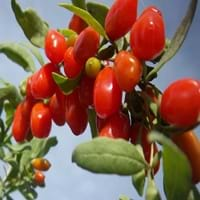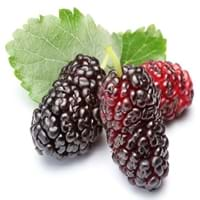Health Benefits
Anti-oxidant properties, Eye care, Helps in cartilage regeneration, Regulates Blood Sugar, Treatment of osteoarthritis
Anti-aging benefits, Boosts immune system, Cancer prevention, Flu treatment, Hair care, Heart care, Improves eye vision, Increases metabolic rate, Kidney stone treatment, Maintains healthy cholesterol level, Skin cleansing, Skin rejuvenation, Treatment of common cold, Treatment of skin Diseases
General Benefits
Boosts immune system, Digestive aid
Boosts immune system, Controls blood sugar levels, Flu treatment, Improves eye vision, Maintains healthy cholesterol level, Treatment of common cold
Skin Benefits
Anti-aging benefits, Reduces wrinkles, Treatment of skin diseases
Anti-aging benefits, Skin cleansing, Treatment of skin diseases
Hair Benefits
Protects hair, Regulates hair growth
Protects hair, Regulates hair growth
Allergy Symptoms
Anaphylaxis, Itching, Sneezing, Wheezing
Breathing difficulty, Itching, Nasal congestion, Redness of eyes, Runny nose, Sneezing
Side Effects
May interact with some drugs
Decrease in blood sugar levels, Allergic reaction
Best Time to Eat
Any time except an hour after meal, Don't consume at night and before bed
Best if taken as a breakfast (or empty stomach), As a snack in the late afternoon, Don't consume at night and before bed, Eat the fresh ones, avoid mixing with any other foods, don't eat after meal., Morning time (before lunch)
Vitamin B5 (Pantothenic Acid)
Not Available
Vitamin C (Ascorbic Acid)
Vitamin K (Phyllochinone)
Phytosterol
Not Available
Calories in Fresh Fruit with Peel
Calories in Fresh Fruit without Peel
Not Available
Not Available
Calories in Canned Form
Not Available
Not Available
Season
Autumn
Spring, Summer
Varieties
No Types
Charparral, Pendula, Teas, Bellaire and Lingan
Color
Scarlet red
Pink, Purple, White
Taste
Slightly bitter, Tart
Tart
Soil Type
Well-drained
Clay, Loam
Climatic Conditions
Cold, Hot
Sunny
Facts about
- Study says a man named Li Qing Yuen used to eat goji berries daily and lived for 252 years.
- They are also known as wolfberries in India & China.
- This fruit is used for spiritual purposes at many places.
- It can take up to 10 years for a tree to produce mulberry fruit.
- Mulberry leaves are fed to silkworms to enhance silk production.
- In Germany, they say that devil uses root of mulberry tree to polish his boots.
Other Countries
Canada, France, India, United States of America
Colombia, Egypt, India, Indonesia, Kenya, Mexico, Pakistan, Peru, Russia, United States of America
Top Importer
United States of America
Not Available
Botanical Name
Lycium barbarum
Morus Alba
Synonym
Wolfberry
Morus atropurpurea or Morus multicaulis
Subkingdom
Tracheobionta
Tracheobionta
Division
Unknown
Magnoliophyta
Class
Unknown
Magnoliopsida
Subclass
Asteridae
Alismidae
Family
Solanaceae
Moraceae
Species
L. barbarum
M. alba
Generic Group
Not Available
Mulberry
Difference Between Gojiberry and Mulberry
We might think that Gojiberry and Mulberry are similar with respect to nutritional value and health benefits. But the nutrient content of both fruits is different. Gojiberry and Mulberry Facts such as their taste, shape, color, and size are also distinct. The difference between Gojiberry and Mulberry is explained here.
The amount of calories in 100 gm of fresh Gojiberry and Mulberry with peel is 32.00 kcal and 43.00 kcal and the amount of calories without peel is Not Available and Not Available respectively. Thus, Gojiberry and Mulberry belong to and category.These fruits might or might not differ with respect to their scientific classification. The order of Gojiberry and Mulberry is Solanales and Rosales respectively. Gojiberry belongs to Solanaceae family and Mulberry belongs to Moraceae family. Gojiberry belongs to Lycium genus of L. barbarum species and Mulberry belongs to Morus genus of M. alba species. Beings plants, both fruits belong to Plantae Kingdom.









